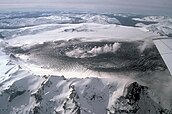User:Allard
Hello and a warm welcome to all my fellow Wikipedians. How nice of you to drop in to see who I am!
Morning>
Wikipedia & me:
[edit]How I discovered Wikipedia, I do not remember. But from being a reader I slowly became a contributor. Although I don't work that much on Wikipedia I do see myself as a Wikipedian. I don't go searching on Wikipedia what I can edit next, I edit what I find and want to do. This means I add and mainly improve a lot of small things and only rarely I make large edits.
My work:
[edit]Articles I've started on Wikipedia:
- Fort Knox Bullion Depository
- Animals are Beautiful People
- Template:David Attenborough Television Series
- Template:Malta Islands
Images I made for Wikipedia:
 Dutch lower house as from 2006
Dutch lower house as from 2006 New image of the Netherlands Air Force Roundel
New image of the Netherlands Air Force RoundelMap on membership of the League of Nations
United Nations membership map
 Improved image of the British Helgoland flag
Improved image of the British Helgoland flag New image showing the current flag of Hel(i)goland
New image showing the current flag of Hel(i)goland
Article guide:
[edit]A list of articles worth looking at, if one can find them:
- Antidisestablishmentarianism
- Ball's Pyramid
- British Isles (terminology)
- Eadweard Muybridge
- Gunpowder Plot
- Horace de Vere Cole
- Humphrey (cat)
- Islomania
- List of countries by date of nationhood
- List of flags
- List of people who died on their birthdays
- List of regnal numerals of future British monarchs
- List of unusual deaths
- Northwest Angle
- Quadripoint
- Racetrack Playa
- Rule of tincture
- San Gimignano
- Transcontinental country
- Undivided India & Partition of India
- Voyager Golden Record
- Web colors
- Winchester Mystery House
And there's always the Random article
And to all citizens of the European Union, please read this: Oneseat.eu
News
[edit]
- Voepass Linhas Aéreas Flight 2283 (aircraft pictured) crashes in the Brazilian state of São Paulo, killing all 62 people on board.
- Sheikh Hasina resigns as the prime minister of Bangladesh following anti-government protests, and Muhammad Yunus is appointed leader of an interim government.
- Following a mass stabbing in Southport, far-right protesters riot in England and Northern Ireland.
- The United States, Russia, and their respective allies agree to a prisoner exchange of 26 people.
Selected anniversaries
[edit]August 14: Independence Day in Pakistan (1947)
- 1264 – War of Saint Sabas: A Genoese fleet captured or sank most of the ships of a Venetian trade convoy off the Albanian coast.
- 1816 – The United Kingdom formally annexed the Tristan da Cunha archipelago, administering the islands from the Cape Colony in South Africa.
- 1941 – After a secret meeting in Newfoundland, British prime minister Winston Churchill and U.S. president Franklin D. Roosevelt (both pictured) issued the Atlantic Charter, establishing a vision for a post–World War II world.
- 2021 – A magnitude 7.2 earthquake struck in Haiti, killing at least 2,248 people and causing $1.5 billion in damages and economic loss.
- Qian Hongzuo (b. 928)
- Anders Bure (b. 1571)
- Bobby Eaton (b. 1958)
- Magic Johnson (b. 1959)
Did you know...
[edit]- ... that horse and sleigh racing once took place on Ocean Parkway (pictured)?
- ... that islands are home to an estimated 41 percent of land vertebrates at risk of extinction?
- ... that Ken Goldin has sold more than US$1.3 billion in collectibles?
- ... that one of the items on display at the Baltimore Museum and Gallery of Fine Arts was George Washington's shaving brush?
- ... that before Fred Thomas became an MP, he was the Royal Marines' light heavyweight boxing champion?
- ... that Fumika Baba had to learn how to draw for her role in the live-action drama adaptation of Hey Sensei, Don't You Know?
- ... that before becoming a commissioner of Indian affairs, William P. Dole was only known to have encountered Native Americans once in his life?
- ... that the pulse stops during the soliloquy of In C Mali?
- ... that Bolivian intelligence officer Roberto Quintanilla was responsible for cutting off Che Guevara's hands?
Today's featured article
[edit]Hudson Volcano is a volcano in the rugged mountains of southern Chile. Lying in the Southern Volcanic Zone of the Andes, it was formed by the subduction of the oceanic Nazca Plate under the continental South American Plate. Hudson has the form of a 10-kilometre-wide (6-mile) volcanic caldera filled with ice. The volcano has erupted numerous times in the past 2.5 million years forming widespread tephra deposits, and is the most active volcano in the region. Four large eruptions have taken place in the past 20,000 years: 17,300–17,440 before present (BP), 7,750 BP, 4,200 BP, and in 1991. The 7,750 BP eruption was among the most intense volcanic eruptions in South America during the Holocene, devastated the local ecosystem and may have caused substantial shifts in human settlement and lifestyle. During the 1991 eruption, volcanic ash covered a large area in Chile and Argentina, and was deposited as far as Antarctica. The last eruption was in 2011. (Full article...)










